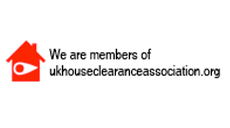
Cricklewood or Le Crickeldwode
Cricklewood lies in a valley between five hills (between Shoot-up Hill, Childs Hill, Hendon (‘the high hill’), Dollis and Dudden Hills. In the times when the whole area was covered in thick woods, five streams used to run down the hills and meet. All of them are now culverted. The name was given by the Saxons, meaning ‘wood with uneven outline’ and was first recorded in 1295 in its normanised version of ‘Le Crickeldwode’. Then it was a small settlement on Edgware Road.
By the 18th century there were several farms and hamlets in Cricklewood and nearby Childs Hill (named after a 14th century inhabitant Richard Child). Cricklewood was divided between the parishes of Willesden and Hendon.
In the middle of the 19th century Cricklewood was only ‘a village one mile in length, consisting of only a few dwellings chiefly occupied by tradesmen of the metropolis. Despite being on an important Roman road, the area was notorious for deep mud and highway robberies.
The important landmark at that time was the Crown inn. First recorded in 1751 it was ‘an ivy-clad house with pretty tea-gardens and a stille alley’, complemented by a horse pond. Rather less idyllically, bare-knuckle prize fights took place in nearby fields.
The arrival of railways east of the Edgware Road in 1867 and the opening of Childs Hill (now Cricklewood) station in 1870 gave boost to house building north of the station to house railway workers. However, the passenger services were infrequent and stopped in 1902. The opening of Willesden Green Metropolitan Railway station in 1879 and the introduction of sewers helped the development of the region. The area was also serviced by buses, first horse drawn, then motored by 1911. There were trams running from Edgware to Cricklewood, and after the First World War, along Walm Lane to Willesden The tram routes were converted to trolleybuses in 1936.
Towards the end of the 19th century more houses and roads were built, along with churches, a school and shops. Among the streets was Chichele Road, laid out by local landlords All Soul’s College, Oxford and named after college founder Henry Chichele. The 1914-15 Ordnance Survey map shows a ‘picture palace’ and a skating rink on Edgware Road.
What can EasyClear House Clearance do for you?
EasyClear are a fully insured, licensed and a highly experienced house clearance company. We provide an environmentally sensitive service where we recycle and re-use where ever possible. Where that isn’t possible we ensure that we dispose of your rubbish legitamately and carefully.
We operate locally in Cricklewood providing house clearance, garden clearance and a full range of contract service for offices and businesses. We offer a worry free contents appraisel which includes professional valuation of antiques, quality collectables and second hand furniture.
Understanding our customer needs and what the customer expects in order to provide the very best bespoke service, has made EasyClear the outstanding clearance provider. With our Cricklewood house clearance and rubbish removal, EasyClear has a reputation for strong business ethics, combined with an awareness of today’s customers needs.
Call us anytime of the day or night 0800 58 78 783 (mobiles call 0208 773 2000)








